Annie Leibovitz – A Photographer’s Life . 1990 – 2005
“A family album, a comprehensive exhibition, and a personal diary – Annie Leibovitz’s photographs from her private life and professional work merge seamlessly into a chronicle of the events, official commissions, and personal stories of the last fifteen years.
C/O Berlin presents “A Photographer’s Life” as first and only venue in Germany. The exhibition comprises a total of 200 photographs, many of them large-format works and monochrome landscapes, as well as a number of private family photos and small format black and white portraits.” [source: c/o berlin]
She is holding a lecture as well:
Lecture
Annie Leibovitz
21.02.09 . 4 pm
To coincide with the Annie Leibovitz exhibition, C/O Berlin introduces the US-american photographer in a discussion. Annie Leibovitz will provide insight into her work, personal experiences, and views.
Annie Leibovitz, born in 1949 in Westport, Connecticut, USA, is one of the most important and influential portrait photographers worldwide. Covering both applied and artistic photography, the scope of her work is extremely broad. Along with her portraits, her photo documentaries and advertising campaigns for numerous American companies have achieved high acclaim. She attained international prominence in 1980, when she photographed John Lennon naked in bed with Yoko Ono – hours before his death. Leibovitz lives in the USA.
Pre-selling from 07.02.09 directly at C/O Berlin
No reservation
Admission 20 Euro . reduced 15 Euro
Sponsor American Express
Supporter audi . Wall . Dinamix
Ambassy of the United States of America
Media partner Vanity Fair . radio eins . zitty . unlike.net
——————————————————–
fotos:





Joakim Eskildsen – The Roma Journeys
The Roma Journeys
Between 2000 and 2006 I together with writer Cia Rinne undertook travels in seven different countries with a view to gaining an insight into the life of the Roma and the conditions they face. We always tried to spend a considerable length of time among the people whom we wanted to learn about and, if possible, to live with them for a while.
It was our own interest that initially took us to the Roma streets in Hevesaranyos in northeast Hungary, where we spent four months at the home of Magda, an elderly Roma. The other journeys to Romania, India and our travels in Finland came about through personal contact, while in Greece and Russia we were initially assisted by human rights organizations and in France by the Centre de recherches tsiganes in Paris.
These Roma journeys were by no means meticulously planned, and instead the product of a number of coincidences that enabled us to come into contact with the Roma. We endeavored to communicate directly with them. In most countries this was possible, and while in Russia and India we were accompanied on our travels, and thus had willing assistance.
We have frequently been asked what had triggered our interest in the Roma, but we were unable to provide a definitive, let alone exhaustive answer. What is certain is that once we hard started we were unable to simply stop continuing with the project. The more we found out about the Roma and got to know them, the more our interest in and liking for them grew.
In keeping with the different countries traveled, the photographic body of work is divided into seven series, the sequence of which roughly corresponds to the chronology of our journeys.
[via official site: Joakim Eskildson]
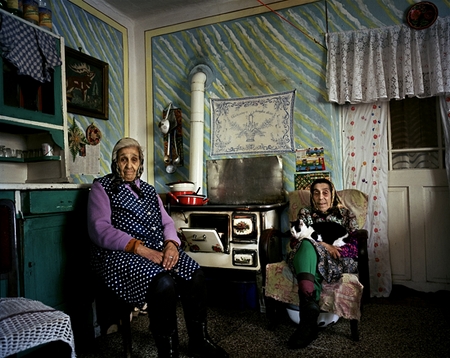
Hungary
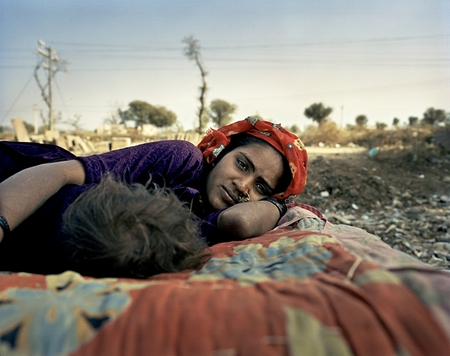
India
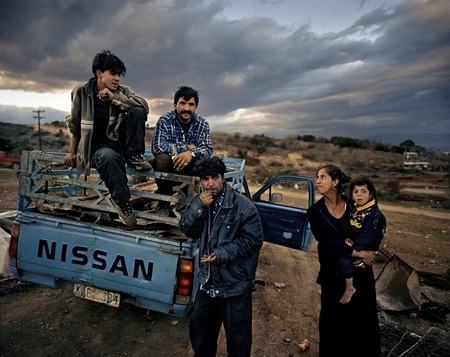
Greece
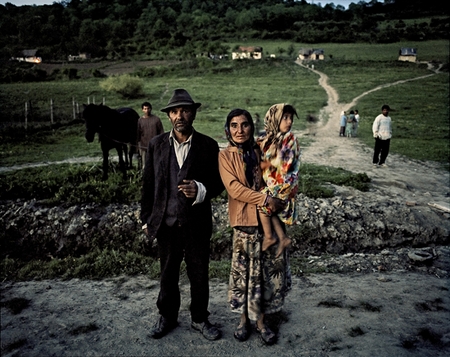
Romania
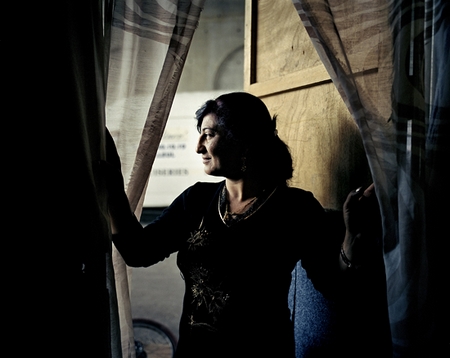
France
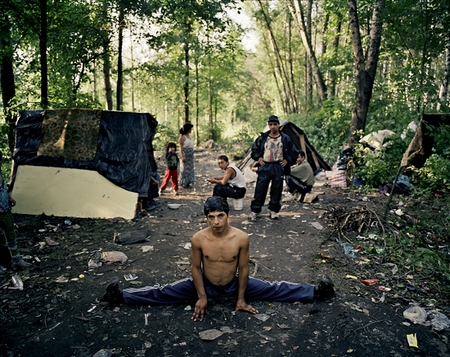
Russia
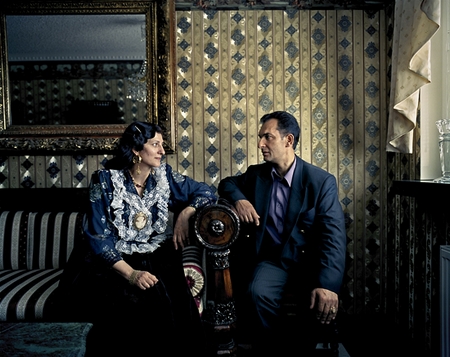
Finland
See more images at Joakim Eskildson’s website. The project has been published as a book as well.
Living in Three Centuries: The Face of Age
Mark Story’s photo-series “Living in Three Centuries: The Face of Age”
ARTIST STATEMENT
The photographs for this portrait series were taken in various locations around the world between 1987 and 2005.
The Gerontology Research Group estimates there are 250,000 centenarians (people 100 years and older) currently living in the world. In rare instances, people live to 110 years and beyond, inspiring a new demographic label: supercentenarian. The Gerontology Research Group, through rigorous investigation of records, acknowledges about 65 supercentenarians, and estimates that about 350 are alive worldwide today.
The idea to photograph people who have lived in three centuries evolved over the course of the project. First, I was simply interested in taking portraits of people who appear worn beyond their years by living extraordinarily hard lives. Those experiences drew me to centenarians, and on to supercentenarians and their stories.
People consistently ask the same questions when viewing the portraits: How does a person live to be 114 years old? What do these long-lived people have in common that makes many of them look younger than people in their 90s, 80s and even 70s? The notes on aging is a short review of the current research on longevity.
The experience of talking with a 110 year-old man whose father stood next to Abraham Lincoln during the Gettysburg Address does not easily lend itself to words. A photograph seemed appropriate.
[1]
NOTES ON AGING
Lifespan
There have always been individuals who have lived into old age, but few have lived near the limits of the human lifespan. Currently, there are about 250,000 centenarians living in the world.With so many people now living longer, a new demographic label has been created for those who have reached 110: supercentenarian. Within verifiable historical records, as of September 2005, according to the Gerontology Research Group*, fewer than 1,000 people have lived to 110, and only 17 people have reached the age of 115. The lifespan record is held by Madame Jeanne Calment of France, at 122 years 164 days.
Rather than aging more, centenarians and supercentenarians have successfully avoided debilitating diseases and injury, and aged more slowly. In general, their bodies have also postponed the chronic degenerative diseases of aging — heart disease, cancer and Alzheimer’s Disease, until their last few years.
The Common Characteristics of Supercentenarians
Nearly all people who live to be 100 or older have long-lived relatives. A man with a sibling who lives to 100 years of age is 17 times more likely to live to 100 himself. Children of long-lived people also tend to have marked delays in the onset of cardiovascular disease.Most of these supercentenarians said they made no conscious effort to eat nutritiously, and many simply stated that they just ate what they grew and raised on the farm. Nearly all supercentenarians have been lean for their entire lives, some naturally and some intentionally.
While some supercentenarians did drink alcohol, and several drank hard liquor, many never drank at all. Although most never smoked, one has a long history of smoking tobacco, and another used snuff for 103 years.
Many of these supercentenarians did not see a doctor until they were in their 90s. Some for lack of money, but more often, they just weren’t sick or injured enough to warrant a visit. Several, who had seen a doctor only a handful of times or never, also stated that they had never taken any medication.
Many supercentenarians, when in their early 100s, were mobile and quite active physically, mentally and socially, and able to live independently.
Perhaps the most outstanding characteristic of long-lived people is a tendency to not react to stress with excessive worry. These people tend to like living, many are deeply spiritual, and most have a well-developed sense of humor.
At her 120th birthday party,
when Jeanne Calment was asked by a young journalist,
“Will I see you at next year’s birthday party?”
She instantly shot back,
“I don’t see why not;
you look pretty healthy to me!”
[2]
112 year 111 day-old
African American man —
the 16th oldest living person in the world,
and the oldest living man in the USA.
The oldest living World War I
combat veteran —
he earned the Victory Medal,
the Occupational Medal,
as well as the Legion of Honor —
France’s highest honor given
to surviving members of U.S. Armed Forces
who fought on French soil during World War I.
He returned home to farming,
married, had seven children,
and served as the superintendent
of his Sunday School class for 75 years.
He never smoked or drank alcohol;
and he takes no medicine, not even aspirin.
He drove until the age of 106,
when his children
decided to hide his car keys from him.
104 year-old
Navajo Native American woman
living near the rim
of Canyon de Chelly, Arizona.
She sat for twenty minutes
in 24-degree weather
in a thin jacket
while being photographed.
When I complained
that my fingers
couldn’t move,
she said,
“It’s not cold.”
For more photographs and informations visit: www.markstoryphotography.com
—————————-
[2]
Notes in Aging
Humanism in China
Shadows of the East
Article by Tilman Spengler on signandsight.com [1]
In a bleak upland region in central China two cheerful women walk out of a cave, above whose entrance a large sign proclaims “Fashion Store”. On a branch of the Yangtze River village children stand up to their hips in the freezing cold water dangling souvenirs on the ends of long bamboo poles, hoping to attract the custom of the tourists on the passing excursion boat. A group of six blind story-tellers is led over a stony mountain pass in the north-east. Curious onlookers hiding behind their sunglasses crowd round the two victims of a traffic accident. A happy, exhausted mother breast-feeds her triplets.Those are just five images out of almost 600 photographs from the People’s Republic of China that went on show on May 20 at the Museum of Modern Art in Frankfurt. This is a reproduction of an exhibition that first opened three years ago in Guangzhou before moving on to Shanghai and Beijing. In the original show 250 Chinese photographers showed works covering the past 50 years; the curators had a total of 100,000 photographs to choose from.
Now the photo show with the unusual name – the original version was also called “Humanism in China” – has landed in Frankfurt for its first stop in Germany. It will go on to Stuttgart, Munich, Dresden and Berlin, whose museums have also made a major contribution to the work of bringing the documentary pictures over to Germany. Visitors will be grateful, for nowhere in any other contemporary exhibition has it been possible to get closer to the ordinary life of the nation that makes up a quarter of the world’s population.
The term “humanism” in its current Chinese form made its way into the cosmos of Chinese thought as a rather lonely stowaway in a Japanese translation of Schopenhauer: “The belief that mankind is the root”. Of course today, when Chinese people speak about what we in the West would define as “humanism” they find their own idioms and metaphors, where Schopenhauer’s role is naturally only a subsidiary one. So how did the courageous curators in Canton come up with this term? Two simple thoughts perhaps hold the key. “Humanism” has, as already mentioned, the premise that “mankind is the root”. The decisive thing here is the idea of the root. The word “capitalism”, which radiates a so much bigger promise in today’s China, accordingly means “The belief that capital is the root”.
Every Chinese person, if you will excuse the exaggeration for a moment, thinks in signs, in the characters of his culture. “Capitalism” and “humanism” are only a single character apart. Man against capital. A blind storyteller being led over the mountain pass will understand that, as will a mother trying to breast-feed triplets – as will even an onlooker staring through his shades at a victim on the road.
The semantic ballistics of the word “humanism” can, however, also be understood through the prism of the country’s most recent history. The “brightest lighthouse that ever appeared as a character on a Chinese screen”, as one prominent documentary film called him, Chairman Mao, staged an ideological battle against the “spirit of bourgeois humanism” shortly before launching the Cultural Revolution. Any intellectual who was able to imagine that passion, fear, violence, joy and compassion did not necessarily have to be the direct fruit of correct (or “false”) socialist consciousness, and was able to express those thoughts, was put through the mill – if not by choice then by compulsion.
Today – bearing China’s scarcely healed modern history in mind – anyone who brings up the word “humanism” is also evoking the socialist campaign that almost forty years ago led to the eradication of “humanist” culture in the name of socialism, or the no less devastating attack in the name of capital that began fifteen years ago. In both cases, it is important for posterity to record what made the two women so happy on their way out of the “Fashion Store” cave, and what souvenirs the tourists in the boat took with them. And what stories the blind men are going to tell after they have been led over the mountain pass.
picture source: [2]
——————————————————————–
[1] article: Tilman Spengler on signandsight.com
[2] photos: hr-online.de
[3] catalogue: “Humanism in China”
[4] exhib. in Berlin: “Museum for Photography” – 4May-8July 2007
Weegee in Berlin – Photographs from the Berinson Collection
C|O Berlin is presenting “Weegee‘s story” in the Postfuhramt Berlin.

[photo International Center of Photography Midtown
Exhibition
WEEGEEs STORY
Photographs from the Berinson Collection
24.02. to 06.05.07
PostfuhramtGuided tour 15.04.07 . 3 pm
Weegee’s photographs have an immediate, almost violent impact: they are uncompromising, unprettified. His subjects are criminals, the homeless, accident victims and the assassinated, people on the edges of existence – but also include lovers, people on daytrips and people attending jazz clubs, variety shows and cinemas. The pictures are unique historic documents of everyday life and of the chaos and catastrophes in the New York of the 1930s and 1940s.
Weegee, whose real name was Arthur Fellig, was born in 1899 in Zloczow near Lemberg, Galicia (present-day Zolochiv, Ukraine) and died in New York in 1968. He is the prototype of the modern photojournalist and one of the most important photographers in the 20th century. From 1935 onwards, he worked as a freelance police reporter, adopting the ironic moniker Weegee the Famous. In the mid-1940s, he gave up photoreporting and turned to advertising photography for a variety of magazines such as Life, Look and Vogue, and became a photo caricaturist and a producer of short films.
Gallery-owner and collector Hendrik A. Berinson has compiled over a 20-year period the single most important and most extensive collection of Weegees work. C/O Berlin presents the first comprehensive showing of Weegee’s work in Berlin, including more than 220 black-and-white exclusively vintage prints and of videos by and about Weegee.

[photos] Side Photographic Gallery


1 comment